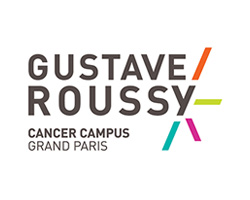Therapy Related Myeloid Neoplasm Post PARP Inhibitors: Potential Clonal Selection.
Résumé
Introduction Clonal selection is one of the mechanisms leading to therapy-related myeloid neoplasms (TRMN). A preexisting somatic mutation in hematopoietic stem cell (defined as clonal hematopoiesis [CH]) emerges under pressure of chemotherapy or radiotherapy, leading to TRMN development. Most of these mutations belong to the DNA damage response (DDR) pathway as TP53 or PPM1D mutations and are known to confer a dismal prognosis. Recently authorized for the treatment of ovarian cancers (OC), the poly (ADP-ribose) polymerase inhibitors (PARPi) represent a promising targeted therapy. However, by inducing DNA damage and altering DNA repair process, PARP inhibition could represent a challenge for the genetic stability of the healthy tissues. Thus, we assessed the effect of PARP inhibition on the development of CH and TRMN after PARPi treatment for OC (TRMN-PARPi) in combination with chemotherapies. Methods Firstly, we performed a targeted 77 genes mutational analysis using Next Generation Sequencing (NGS) in 13 patients exposed to PARPi without TRMN. Secondly, we retrospectively identified, with the help of the UNIHEM group of Unicancer, 17 patients who experienced TRMN-PARPi. Clinical, biological and survival data were collected and compared to 23 OC patients with TRMN not treated with PARPi (Gustave Roussy institutional database). Lastly, NGS was performed for 3 patients with TRMN-PARPi with sequential sampling. Patient's samples were obtained with informed consent. Results Thirteen OC patients during maintenance treatment with PARPi without TRMN were explored by NGS. Median age at NGS was 64.5 years old (yo) (40.5-75.3). 4/13 (31%) patients harbored BRCA1/2 germline mutation. Time between OC diagnosis and NGS was 4.3 y (1-11.6). The median number of chemotherapy line at PARPi initiation was 2 (1-3). 7 received Olaparib, 5 Niraparib and 1 Rucaparib. The median duration of PARPi treatment before NGS was 4.7 months (1.1-25.1). 12/13 patients experienced hematological toxicities during the PARPi treatment. CH was found in 10/13 (77%) patients (Figure 1a), including mutations of DDR genes in 8/10 (80%). 6/8 (75%) patients had 2 or more gene mutations. Next we identified 17 cases of TRMN occurring during or after PARPi administration for OC (6/17 [35%] t-AML and 11/17 [65%] t-MDS). 12/17 (71%) patients had BRCA germline mutations (7 BRCA1 and 5 BRCA2). All received Olaparib with a median dose of 600mg/d (400-1200). Median duration of Olaparib treatment was 1.7 years (0.2-4.6). TRMN-PARPi were described 1.4 months (0-10.9) after the end of PARPi administration. We compared these patients to a cohort of TRMN post OC not treated by PARPi. Number of therapy lines for OC, time between TRMN and OC diagnosis, median age at TRMN, were, for TRMN-PARPi, 2 (1-8), 5.9 y (0.9-20.8), 64.4 yo (46-74); respectively, compared to 3 (1-8), 4.9 y (1.7-36.9), 59.3 yo (35.7-85.7); (p=ns). TRMN-PARPi cytogenetic was unfavorable for 16/17 (94%) (including 11/17 [65%] complex karyotype) compared to 16/23 (70%) (11/23 [48%] complex karyotype). C Median survival was significantly lower in the TRMN-PARPi group 3.9 months 95%CI [2.0-9.7] and 6.1 months 95%CI [4.1-15.8] respectively, p=0.046, Fig 1b). However, median survival from OC diagnosis was not different between the two groups 6.2 y 95%CI [5.6-NA] for TRMN-PARPi vs 5.6 y 95%CI [5.0-11.6]. NGS was available for 8/17 TRMN-PARPi and revealed mutations in DDR genes in 7/8 patients (6 patients with TP53 mutation, 2 with PPM1D mutation). For 3 patients, we had samples from OC stage, before PARPi administration. We found that mutations from TRMN stage were present at lower frequency, confirming clonal selection by PARPi treatment (Figure 1c). Conclusions Here we described, for the first time, a cohort of TRMN patients previously treated with PARPi for an OC. Intriguingly, most of these TRMN occurred with a short latency at the end of PARPi treatment, with unfavorable cytogenetic and very short OS. Moreover, we found a very high percentage of CH involved in the DDR pathway (62%) in patients under PARPi treatment without TRMN suggesting a potential clonal selection which could lead ultimately to TRMN. PARPi are now indicated in 1rst line high grade OC regardless of BRCA status, which should expand indications. Benefit for OC patients is not questionable; however, caution will be warranted for patients with CH before PARPi treatment, especially implicating DDR mutations. Disclosures Etienne: Incyte: Consultancy, Speakers Bureau; Pfizer: Consultancy, Speakers Bureau; Bristol-Myers Squibb: Consultancy, Research Funding, Speakers Bureau; Novartis: Consultancy, Research Funding, Speakers Bureau.
Domaines
Sciences du Vivant [q-bio]| Origine | Fichiers produits par l'(les) auteur(s) |
|---|

